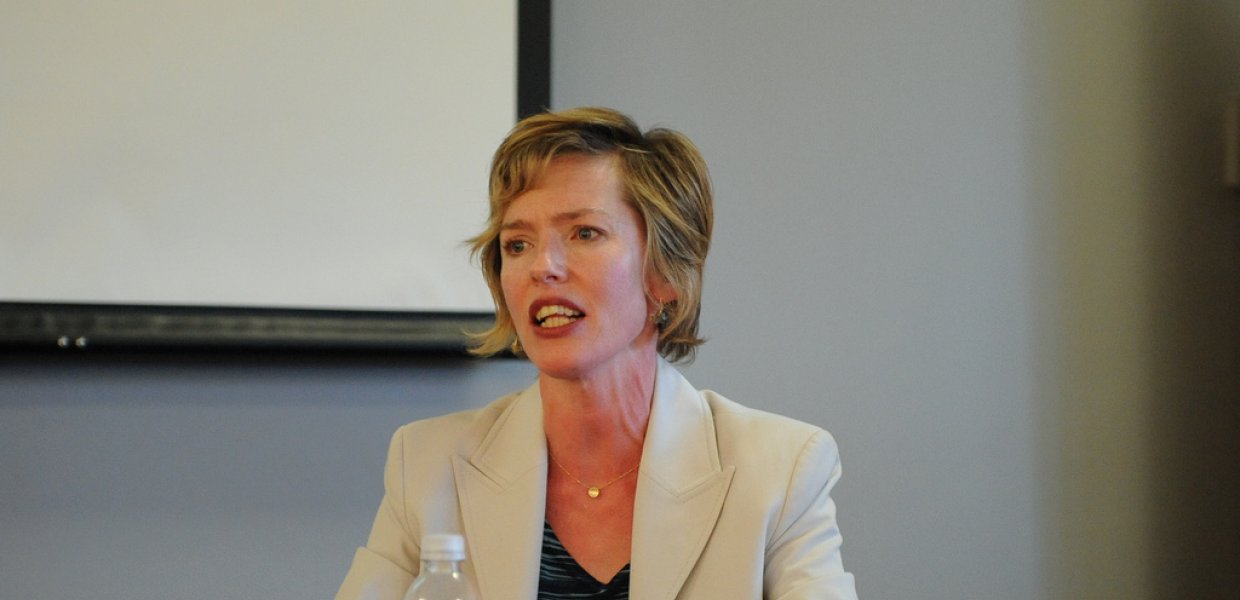By Johanna Blakley, Managing director and director of research at the Norman Lear Center
I was delighted when the editors of Women's Studies Quarterly asked me to submit a piece to them about social media and gender. They had seen my TEDWomen talk on the same topic and suspected (correctly) that I'd be interested in pursuing those themes in print. They made another request as well: might I think of a way to add a visual component and a social media campaign of some sort?
Now that's the kind of thing that takes a village. Thankfully, I have one! I immediately turned to the Lear Center's terrific in-house designer, Veronica Jauriqui (who designed the visuals for two of my TED talks) and my trusty intern (and social media expert) Sarah Ledesma. Through Sarah we met the tremendously talented photographer Jasmine Lord, who immediately understood what we wanted (you can read about all of them here). I'm incredibly proud of the results, which you can check out on Pinterest and Tumblr.
Now for a little backstory:
My TEDWomen talk was about the ramifications of the fact that women dominate social media platforms all around the world. I argued that this will lead to a fundamental shift in the content we see in traditional mass media, and that all demographic groups - not just women--will benefit from new audience metrics that will emerge from networked media platforms. While old media companies used to make do with demographic segmentation of audiences, new media allows anyone looking for an audience to target them in a much more nuanced way, accounting for their actual interests rather than stereotypical notions of what (for instance) an 18-24 year-old white male might like.
I believe that this is a revolutionary moment in the history of mass media: whether we realize it or not, we look to mediated images for reflections of ourselves and most of us have been disappointed by the distorted mirror held before us, encouraging women (for instance) to be stick thin and sexually accommodating, and encouraging men to be physically powerful and sexually insatiable.
Social media offers all of us the possibility of taking our media into our own hands, constructing our own broadcast channels, creating our own audiences, and interacting with others who share our quirky combination of interests.
So, when WSQ asked me to come up with a visual component for the article, it seemed to me that we needed to develop a new mode of portraiture - one that would tell people more about our taste, values and beliefs than about our demographic coordinates. We used word clouds, which reflect the relative frequency of words within a data set, to summarize social media preferences and profile data from each of the portrait subjects. We were inspired by lace veils that both reveal and obscure the subject, and so we projected each sitters' own metadata on their physical bodies, creating a veil of revealing data.
I had recently visited the Metropolitan Museum of Art and seen The Renaissance Portrait from Donatello to Bellini. I was startled by the stark profile paintings that dominated the galleries devoted to the early stages of secular portraiture in Europe. I learned that painters were constrained by the belief that strict side profiles were the only way to reveal the true character of the subject. By accurately representing the slope of the forehead, the shape of the nose and the jut of the chin, a painter could communicate the ethical and moral attributes of the sitter. Any deviation from the strictest of profiles was perceived as an attempt to hide all manner of sins.
Of course this restriction eventually disappeared (the Dutch, apparently, would have none of it), but in the age of the "social media profile," I realized that we have an unprecedented opportunity to invent new rules for the way we capture, define, and represent ourselves to the world. And our age, gender, race, and income bracket need not be the focus.
The Media in Our Image Portraits (as we ended up calling them) meld together Renaissance conventions of portrait painting with contemporary visual data mining. But we can imagine all kinds of ways that portraiture could be reinvented in the age of social media. We've posted our ideas on Pinterest and Tumblr: please join the conversation and share your inventions with us.
You can read my piece in the Summer 2012 issue of "Women's Studies Quarterly" here. You can purchase a copy of the entire issue here.
This blog post originally appeared on USC Annenberg's Norman Lear Center website









